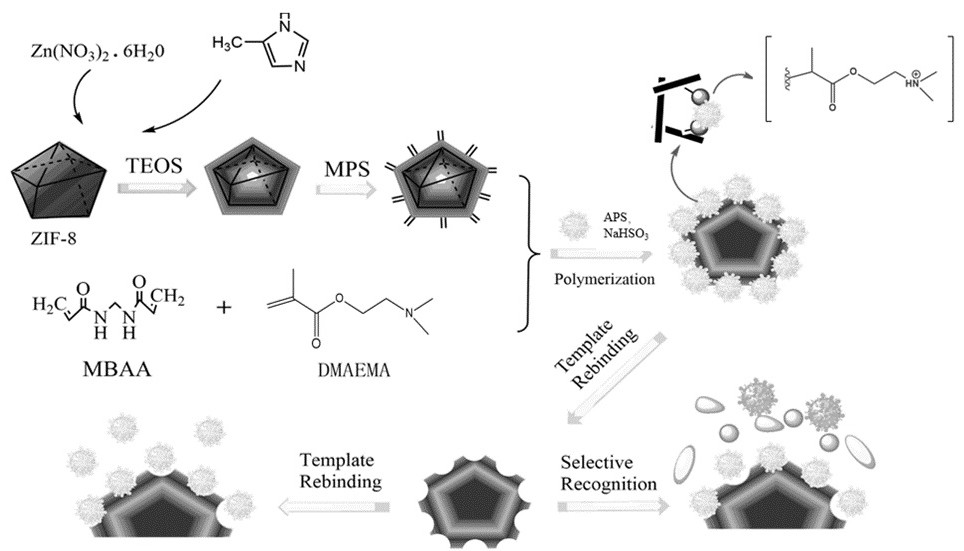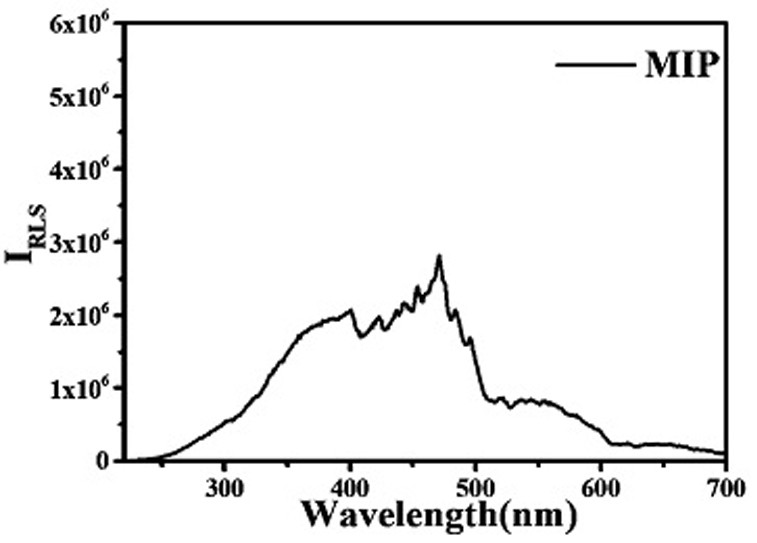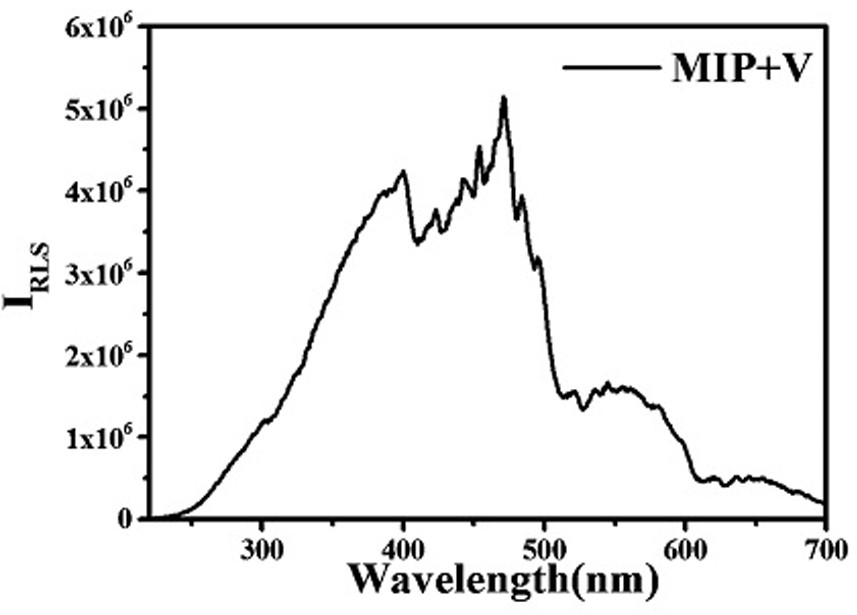Gas response type resonance optical molecularly imprinted sensor and preparation method thereof
A molecularly imprinted, gas-responsive technology, applied in the field of analytical chemical detection
- Summary
- Abstract
- Description
- Claims
- Application Information
AI Technical Summary
Problems solved by technology
Method used
Image
Examples
Embodiment 1
[0104] Example 1: Preparation of gas-responsive resonant optical molecular imprinting sensor based on zeolite imidazolate material
[0105] Such as figure 1 shown, including the following steps:
[0106] (1) Preparation of zeolite imidazolate material ZIF-8:
[0107] 1.485 g Zn(NO 3 ) 2 ·6H 2 O and 3.28 g of 2-methylimidazole were respectively dissolved in 50 mL of methanol, then the latter solution was quickly poured into the former solution, stirred at room temperature for 12 h, the obtained product was centrifuged, and washed three times with methanol to obtain the product Place in a vacuum oven at 60°C to dry overnight.
[0108] (2) ZIF-8@SiO2 2 Particle preparation:
[0109] Put 0.2 g of ZIF-8 particles in a 250 mL round bottom flask, add 140 mL of absolute ethanol and 20 mL of deionized water. Sonicate for 15 min to mix evenly. Under mechanical stirring, add 8 mL of NH 3 ·H 2 O, then slowly drop 3 mLTEOS, react at room temperature for 12 h, collect by centrifu...
Embodiment 2
[0118] Example 2: Feasibility verification of virus detection by MIP resonant optical sensor
[0119] In order to verify the practicability of the present invention, this embodiment verifies the construction principle of the gas-responsive resonant optical molecular imprinting sensor.
[0120] Such as figure 2 As shown, the resonance light intensity at 470 nm is compared as:
[0121] HBV+ MIPs> MIPs; HBV+ NIPs> NIPs;
[0122] Among them, HBV+ MIPs is the product imprinted polymer particle (MIP) obtained in step (4) of Example 1 to adsorb hepatitis B virus; MIPs is the product imprinted polymer particle (MIP) in step (4) of Example 1; HBV+ NIPs is the embodiment 1. The non-imprinted polymer (NIP) obtained in step (4) adsorbs hepatitis B virus; NIPs is the non-imprinted polymer (NIP) obtained in step (4) of Example 1. The dosage and adsorption conditions of HBV+ MIPs and HBV+ NIPs were the same.
[0123] from Figure 4 It can be seen from the results that the imprinted pol...
Embodiment 3
[0124] Example 3: Characterization of properties, morphology and structure of imprinted polymer particles (MIP) and intermediate products
[0125] To verify the CO of imprinted polymer particles (MIPs) 2 Response performance, in this embodiment, dimethylaminoethyl methacrylate CO was studied by proton nuclear magnetic spectrum 2 Response behavior such as Figure 5 As shown, the picture A is the H NMR spectrum of dimethylaminoethyl methacrylate, and the picture B is the CO 2 The hydrogen nuclear magnetic spectrum of the dimethylaminoethyl methacrylate after that, the picture C shows the N 2 H NMR spectrum of dimethylaminoethyl methacrylate (DMAEMA). Observation reveals that CO 2 Afterwards, the protons of the methyl (d) and methylene functional groups (c) were transferred to the lower field at 2.03 and 2.46–2.49 ppm, and the N 2 Returning to the original position, these observations show that the tertiary amine group of DMAEMA can interact with the CO 2 CO 2 The resultin...
PUM
| Property | Measurement | Unit |
|---|---|---|
| size | aaaaa | aaaaa |
| size | aaaaa | aaaaa |
| thickness | aaaaa | aaaaa |
Abstract
Description
Claims
Application Information
 Login to View More
Login to View More - R&D
- Intellectual Property
- Life Sciences
- Materials
- Tech Scout
- Unparalleled Data Quality
- Higher Quality Content
- 60% Fewer Hallucinations
Browse by: Latest US Patents, China's latest patents, Technical Efficacy Thesaurus, Application Domain, Technology Topic, Popular Technical Reports.
© 2025 PatSnap. All rights reserved.Legal|Privacy policy|Modern Slavery Act Transparency Statement|Sitemap|About US| Contact US: help@patsnap.com



